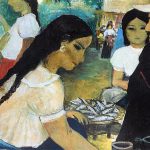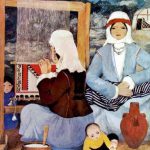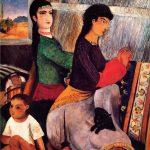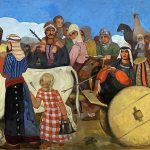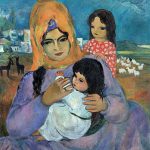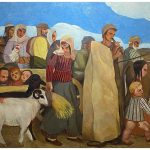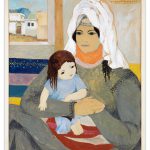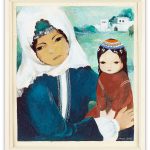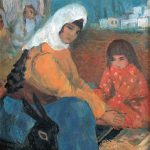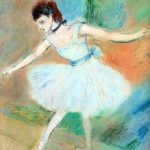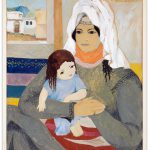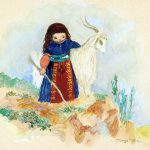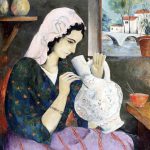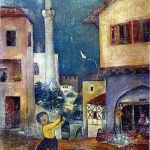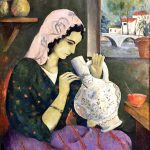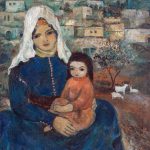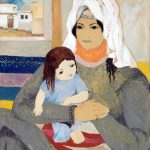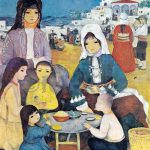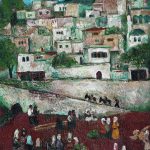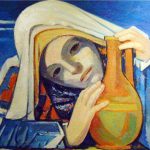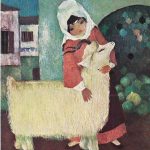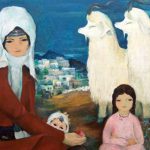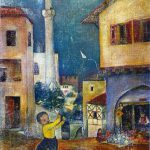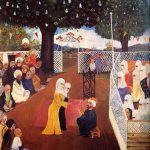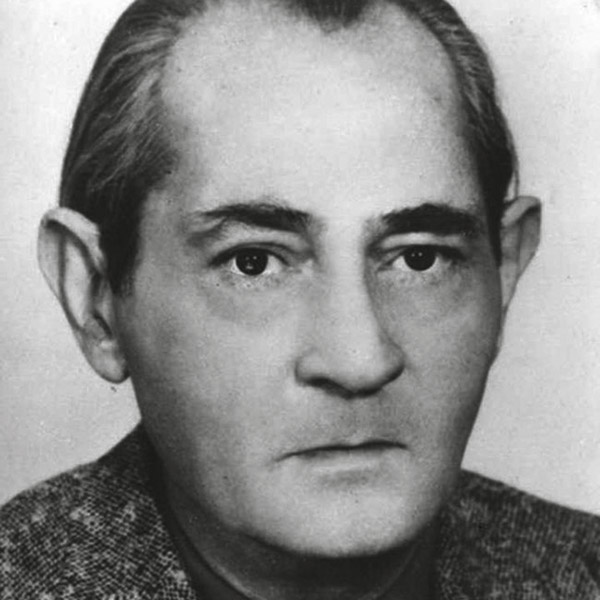
Who is Turgut Zaim? (1906-1974)
Turgut Zaim was born in Istanbul on August 5, 1906. After completing his primary and secondary education at St. Joseph in Kadıköy, he entered the Academy of Fine Arts and worked at Çallı Workshop. However, since it was incompatible with the school’s educational rules, he turned his attention to areas that would help his academic career, traditional Turkish arts, Far Eastern, Chinese and Japanese arts. He worked in Feyhaman Duran’s workshop for a while. Painting, with its new and comprehensive content and related understanding of form, constituted an alternative to the developments in parallel with Western movements and tendencies in our recent painting art. He brought folkloric elements to the fore.
Turgut Zaim, who graduated from Istanbul Fine Arts Academy (1930) and improved his art in Paris, worked as a teacher and decorator at the General Directorate of State Theaters when he returned to Turkey.
Turgut Zaim, who also produces original printmaking, made 39 paintings using zinc and linoleum printing techniques since 1930-31. The subject and style of treatment in these works are no different from his other paintings. In addition to his pastel, watercolor and oil paintings, he was one of the first painters in Turkey to produce original prints in zinc and linoleum techniques at that time.
He participated in the exhibitions of the Independent Painters and Sculptors Association and the D Group and became famous with his paintings on subjects taken from Anatolian life, benefiting from Turkish folklore and tradition. He received first (1958) and second (1957) awards in the State Painting and Sculpture exhibitions. He died in Ankara in 1974.
Artistic Perspective:
He chose Anatolian geography as his source of inspiration in his paintings; In Zaim's paintings, he interprets Anatolia with a kind of socialist romanticism; Anatolian reality gains a cute and optimistic popularity in his painting. The research gains importance in terms of contributing to contemporary Turkish painting art, as the language it uses and its new style understanding brings an original and different interpretation. The research was designed in the survey model. The works were examined in a descriptive and plastic sense and tried to be handled in terms of form and content. In 1932, he participated in the program prepared by the Republican People's Party and made a series of trips to Konya, Sivas and Tokat to get to know Anatolia, its people, life and cultural values. .. Turgut Zaim met Yoruks and Avshars during these trips and took the first steps of his adventure in which he would portray rural life and folkloric values throughout his life. Turgut Zaim is described as the most suitable personality for the purpose of Yurt Gezileri. After 1939, he participated in some Group D exhibitions. Zaim, who was greatly influenced by miniature art from the first years he started painting, used miniatures in his works. Turgut Zaim, who painted Avshars, Yoruks and Anatolian people throughout his life, used animal figures in his works, carpets-kilims, sahans, baskets, bakraks and folkloric women's dresses used by Avshar Villagers in daily life. Ethnographic elements such as are of great importance. As a result of the research; It is possible to see the artist's love of folklore in his paintings, in which he deals with sections from the daily life of the Yoruks, in which he sincerely reflects his love of folklore, and in the villagers' clothes, head and waist binding styles, food culture and weaving motifs in their tents, in the forms that determine his style. Anatolia remained a long-term source of inspiration for Zaim, who was inspired by the geometric composition and schematic figure spirit of Turkish miniature painting.
Source: https://www.idildergisi.com/makale/pdf/1531527586.pdf
